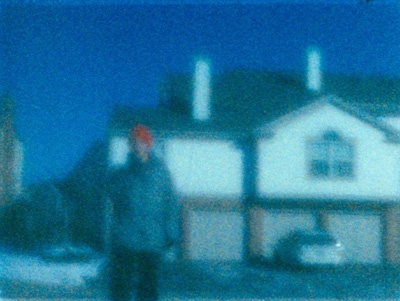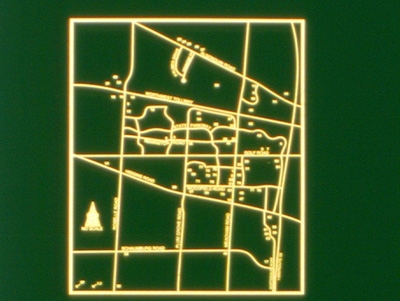

2002, 16 mm, colour, sound, 12 min.
"This pinhole film examines the relationship of the human figure to the "new" suburban landscapes of Schaumburg, Illinois. Found texts provide local (yet generally North American) stories of both human interaction with the landscape and ideas of land development."
Thomas Comerford
In making films with a pinhole camera, returning to a technology that predates the invention of cinema, Thomas Comerford uses consciously archaic means to comment on cinema's technology and on technological progress in general. The fragile, fuzzy images that result from the replacement of the camera lens by a tiny hole have a wispy, almost virtual quality that refers back to the camera obscura of the Renaissance. 'Figures in the Landscape', set in one of the Chicago area's more sprawling suburbs, Schaumburg, includes town maps and plans as well as images of people standing amid empty, almost soul-less spaces. Comerford uses found texts to describe the nature of suburban development and the way high-tech homes have replaced the more "primitive" dwellings of Indians and early European pioneers, thus comparing his pinhole technique with early residents' primitive homes on the one hand while the slicker and higher-tech cinema which he eschews is implicitly paralleled to the new homes of Schaumburg on the other. Comerford's ironic point about "progress" is reinforced when we hear about the Indians' use of trees as trail markers while seeing a giant pole, and hear about early pioneer homes while seeing a particularly vulgar oversized modern dwelling.
Fred Camper
